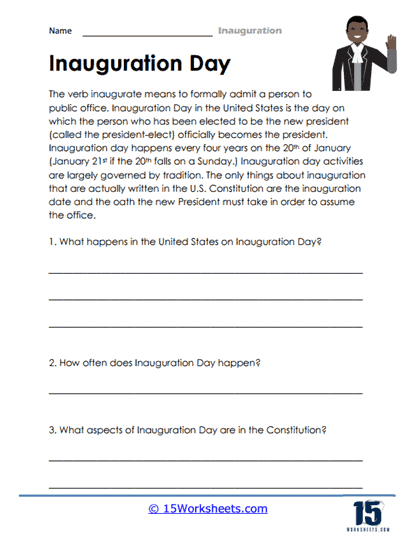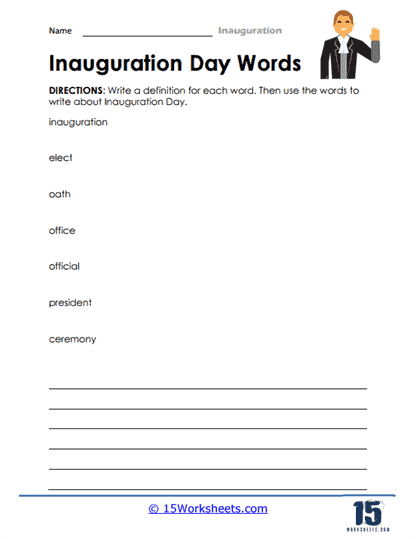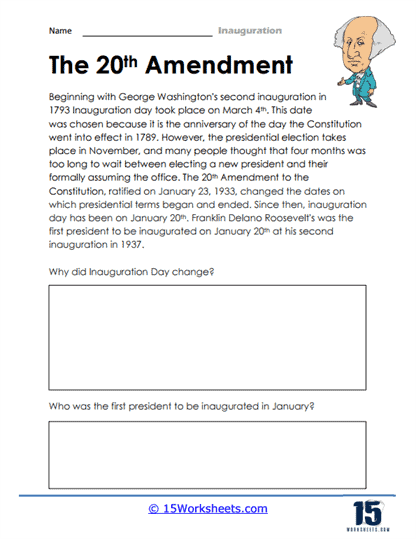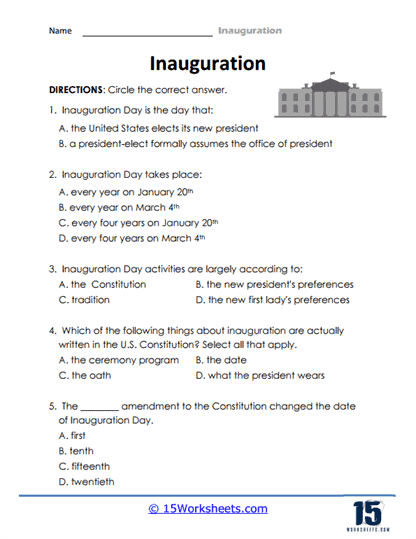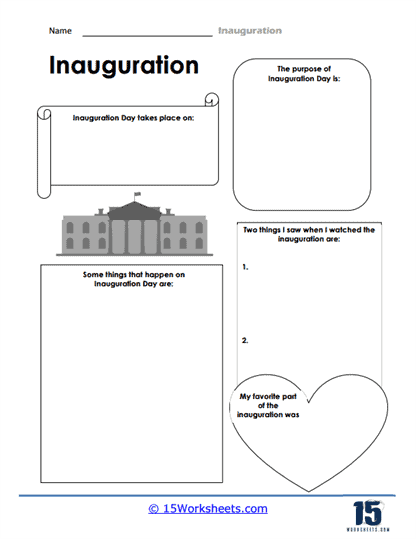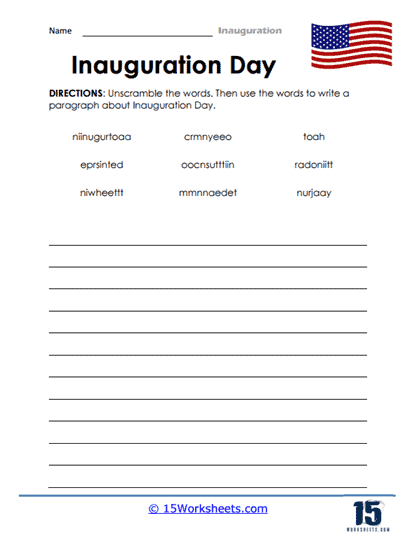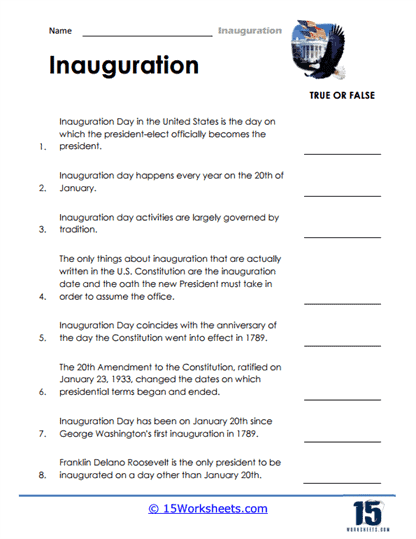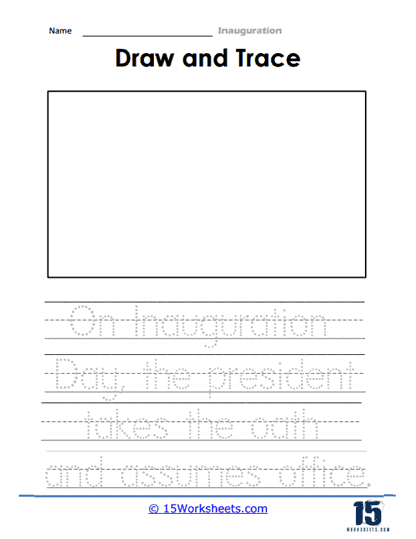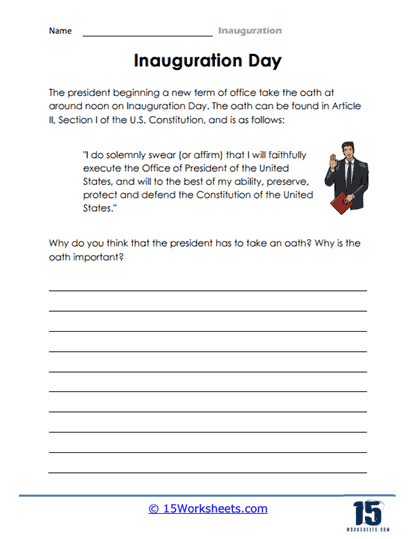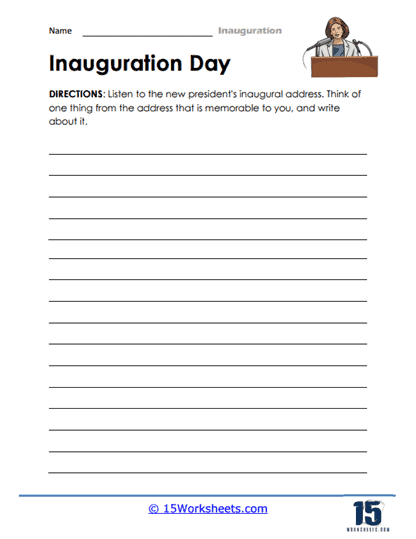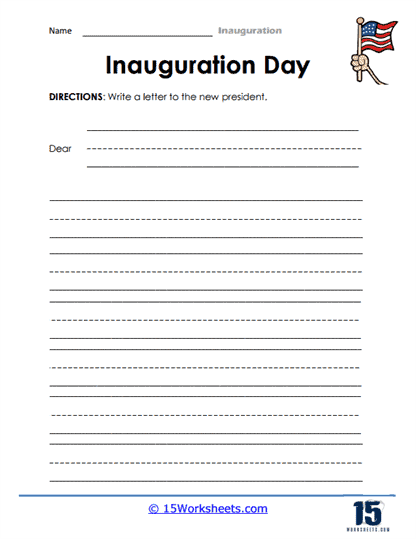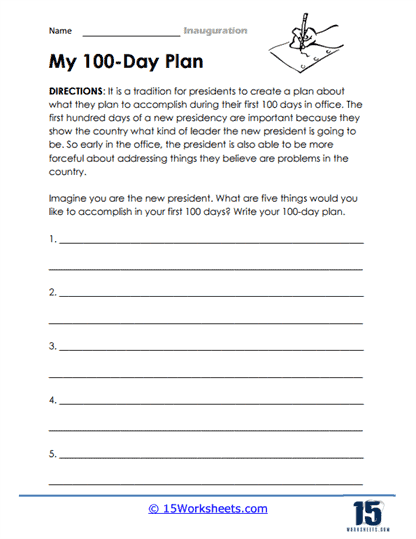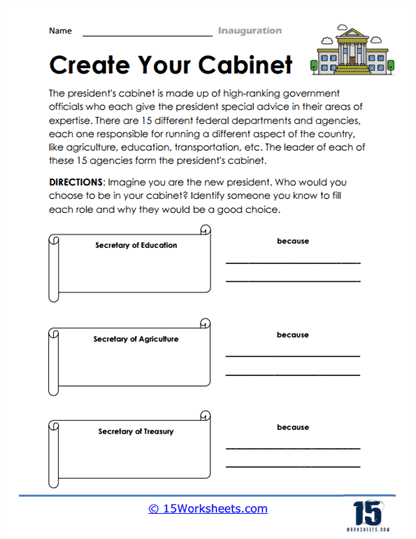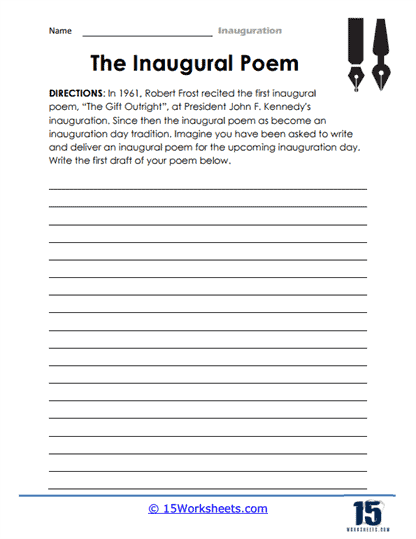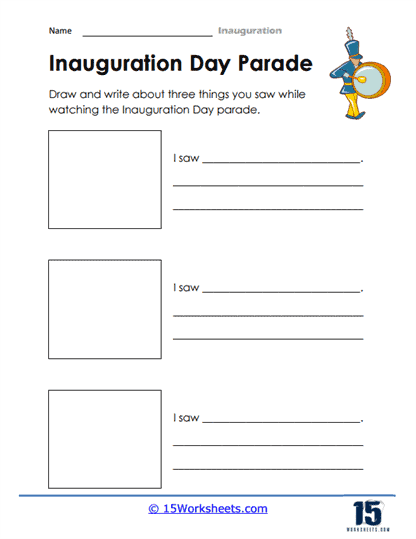Inauguration Day Worksheets
All About These 15 Worksheets
This series of 15 worksheets is designed to introduce students to the significance and traditions associated with the inauguration of the President of the United States. Through engaging activities and thought-provoking exercises, students will gain a deeper understanding of Inauguration Day, its historical context, and the responsibilities of the presidency. Through these worksheets, students will:
- Explore the purpose of Inauguration Day, its historical origins, and the significance of this peaceful transition of power in a democratic society;
- Expand their vocabulary and understanding of the inauguration ceremony, presidential oath, and related concepts;
- Learn about the historical context that led to the ratification of the 20th amendment and its impact on the inauguration process;
- Express their creativity by drawing pictures related to the Inauguration and the Inauguration Parade;
- Develop their own 100-day plan as if they were the President of the United States, considering the key issues and priorities they would address during their initial days in office;
- Select individuals for key cabinet positions, considering their qualifications and expertise in various fields;
- Write their own inaugural poem inspired by the themes of unity, hope, and the future;
- And learn about the significance of the parade and its role in celebrating the inauguration.
Using this series of worksheets will immerse students in the rich traditions and symbolism of Inauguration Day. Through a wide range of exercises, students will develop a deeper appreciation for the democratic process, the peaceful transfer of power, and the responsibilities of the presidency. Overall, this series aims to inspire students to reflect on the values and ideals that underpin American democracy and encourage them to actively participate in civic engagement and responsible citizenship.
What is Inauguration Day?
Inauguration Day is the day on which the President-elect of the United States officially takes office and is sworn in as the President. The ceremony typically takes place on January 20th, following the presidential election held in November of the previous year. Inauguration Day is an important event in American politics, as it marks the peaceful transfer of power from one president to the next or the beginning of a new term for an incumbent president who has been re-elected.
The inauguration ceremony is held on the steps of the United States Capitol in Washington, D.C. It begins with the vice president-elect taking the oath of office, followed by the president-elect. The Chief Justice of the United States administers the presidential oath of office, which states:
“I do solemnly swear (or affirm) that I will faithfully execute the Office of President of the United States, and will to the best of my ability, preserve, protect and defend the Constitution of the United States.”
After taking the oath, the new president delivers the inaugural address, outlining their vision for the country and their administration’s priorities. The inaugural address is an opportunity for the president to unite the nation and set the tone for their presidency.
In addition to the swearing-in ceremony and inaugural address, Inauguration Day often includes other events, such as a morning worship service attended by the president-elect, a parade along Pennsylvania Avenue from the Capitol to the White House, and various inaugural balls and celebrations held throughout the city.
Inauguration Day is a symbol of American democracy, emphasizing the continuity of government, the peaceful transfer of power, and the importance of the Constitution in guiding the nation’s political system.

